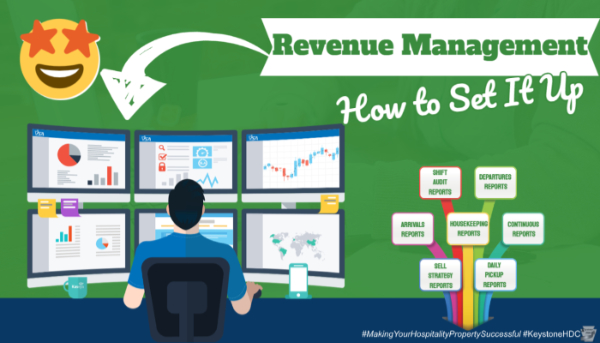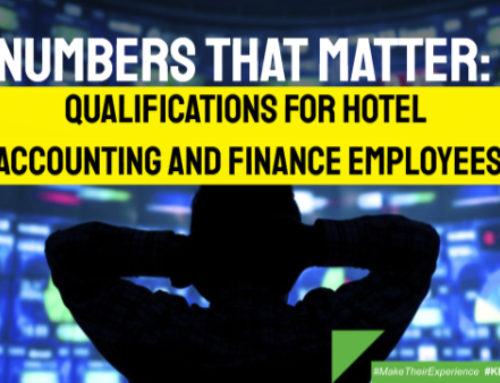.
.
Your guest room is a perishable product so pricing & customer happiness remain extremely important variables.
To stay on top you need to understand revenue management and why it is important. I’ll explain.
Welcome to another edition of Hospitality Property School.
I am your instructor, Gerry MacPherson.
.
Why did you want to become a hospitality property owner?
.
- The idea of becoming a hospitality property owner and greeting guests sounded appealing.
.
- You were tired of the rat race and wanted to take control of your own destiny.
.
- Or like most owners, you wanted to make money or even better, to make more money in less time
.
One of the main factors you need to be successful and make more money in less time it is for you to understand revenue management and why it is important.
.
It is what propels hotels, resorts, inns and bed and breakfasts success.
.
It does not matter the size of your property, a guest room is a perishable product since the number of guest rooms you have is defined. For this reason, pricing and customer happiness remain very important variables, which are subject to hospitality property revenue management.
.
Efficiently managing rates and availability while watching on all the different key performance markers takes training and talent. Branded hospitality property chains have a department that only focuses on these reports which result in well-organised revenue management strategy. This is not the same for smaller properties because time and resources are limited, might take a short-term approach to revenue management.
.
Knowing how to understand the reports is an invaluable resource because they can help hospitality property owners make choices that will result in positive outcomes.
.
.
Key Performance Indicators (KPIs)
You need to know and understand the following numbers to manage the revenue of your hospitality property.
- Occupancy Rate
.
- Average Daily Rate (ADR)
.
- Revenue Per Available Room (RevPar)
.
- Total Revenue/Rooms Sold
.
.
Occupancy Rate
This is one of the easiest metrics you can check.
It is the percentage of occupied rooms compared to total rooms over a certain period of time.
.
Occupancy = Rooms Occupied / Rooms Available
.
Knowing these numbers will help you create the foundation of your revenue management strategy.
.
.
Revenue Per Available Room (RevPar)
RevPar is an operation metric which is analysed by multiplying hospitality properties average daily room rate by its occupancy rate.
You can also analyse RevPar by dividing a hospitality properties revenue by the number of rooms (or beds) it has over a desired period of time.
.
RevPar = Total Room Revenue / Rooms Available
.
RevPar only uses room revenue and does not include other revenue streams such as upgrades, spas, restaurant revenue, etc. You can use this analysis to compare performance to other properties, but it could fluctuate greatly by property type.
.
.
Average Daily Rate (ADR):
ADR calculates the average price paid per room and helps you determine how much money was brought in per room. You calculate ADR by taking the Room Revenue and dividing it by the number of paid rooms occupied.
.
ADR = Room Revenue / Paid Rooms Occupied
.
ADR only considers the rooms that were sold – does not include vacant rooms.
.
.
Other Important Metrics:
There are other important metrics you need to consider when you create reports.
They include:
- total rooms sold
.
- total revenue
.
- revenue divided by category (i.e. rooms. restaurant, spa, etc.)
.
It all starts with the approach to revenue management
- You have to take a long-term approach
.
- Use market information
.
- Analyses
.
One of the major differences between large-branded hospitality property and smaller independent properties is forecasting.
.
Quite often, an independent property owner will look at the current month’s revenue & forecast and might decisions that will affect the entire year. A larger or branded hospitality property will take a look at how the current day and month play into the season, quarter, and year.
.
Even though smaller independent hospitality properties do not have the same resources as larger properties, there are a few things you can do.
Take a Long-Term Approach
When you only look at your revenue strategy on a monthly, your property could be leaving money on the table. Larger properties generally look at revenue and rates by quarters and seasons, rather than by months. When you take a more long-term approach to rates and revenue, you can more correctly react to current market conditions.
.
For example, if you’re in the high season and bookings are soft, you have an idea what you need to make up in the following months. Or, if your next month’s bookings are higher than expected, you can raise rates to make up for this month’s lost revenues.
.
If you handle your rates and revenue monthly, you are more likely to make thoughtless reactions. This means you might make needless changes that could end up costing you more than your current situation.
.
For example, if your current bookings are too soft, your first reaction might be to reduce rates to increase demand. But, if you take the whole season into consideration, you might realise that you last month performance was pretty good and you need not worry about fewer bookings at regular prices.
.
More guests in your property don’t always mean more revenue generated.
.
This is why your ADR is so important.
.
You can lower your rates and generate more demand, but you have to make sure your revenues and profit are still higher.
.
The thing to remember here is that you should be looking at your rate and revenue targets by quarter or season instead of monthly. Every property is different, so there is no definitive forecast structure that makes sense for every property.
.
Are you staying with me so far? Let me know by leaving a short comment
.
Use Market Information
Large branded hospitality properties have the benefit of knowledge. They have the resources to purchase market reports that include information about rates, availability, and projected demand.
.
If you don’t have the resources to buy your own market research reports because they are expensive, you can also check your local tourism websites and offices for up-to-date information. Tourism offices often publicly release information on demand forecasts, upcoming events, and other information that could be useful while planning out a demand that influences rates.
.
You want to make yourself aware of market trends as well as local travel trends to have the most success. Knowledge is power and you want to prepare yourself as much as possible.
.
.
Write Analyses
Large branded hospitality properties write analyses every month that report on how rates and revenue performed.
.
This could be very time consuming for any hospitality property owner, so you might want to consider just analysing those months where you don’t meet your goals. This is important because it means that you did not correctly read the market.
.
Detailed reports containing how and why you missed your goals will help you prevent those mistakes in the future.
.
Analyses are particularly helpful for the same season next year when market trends tend to copy each other. Without analyses, you might not remember exactly what happened a full year earlier.
.
Once you are comfortable putting together the analyses, you could start doing the same for the good months. If you make a decision and read the market correctly, you will likely want to remember what you did to replicate it in the future.
.
.
In conclusion
By learning and understanding the Key Performance Indicators and following the three steps to revenue management,
- Take a long-term approach
- Use market information
- Analyses
You will be able to operate your hospitality property like the large branded properties and stay ahead of your competition.
.
Do you have a program in place for your revenue management? Which one do you use?
Let me know in the comments.
.
If you a member of the Hospitality Property School Groups I’m going to take a more detailed look at the reports you need for your revenue management strategy.
.
In the next episode, I will be taking a close look at your hospitality property rooms.
.
.
PS. Have you been checking out the “INNsider Tips” series released every Thursday? Make sure to check the out at KeystoneHospitalityDevelopment.com or on YouTube by searching INNsider Tips.
.
.
⇒ TO READ OR LISTEN TO THIS EPISODE ON KEYSTONE HOSPITALITY PROPERTY CONSULTING:
https://keystonehpd.com/KHPD202
.
.
Join one of your private groups
https://keystonehpd.com/private-groups
.
.
Get Your INNsider Tips
https://keystonehpd.com/Sign-up-for-INNsider-Tips
.
.
Say hi on social:
Facebook: https://www.facebook.com/KeystoneHDC
.
Twitter: https://twitter.com/KeystoneHDC
.
Linkedin: https://www.linkedin.com/company/keystone-hospitality-development
.
.
Listen to The Hospitality Property School PODCAST here:
https://keystonehpd.com/itunes-podcast
.
https://www.spreaker.com/keystonehdc
.
.
YouTube
.
A Division of Keystone Hospitality Development Consulting






